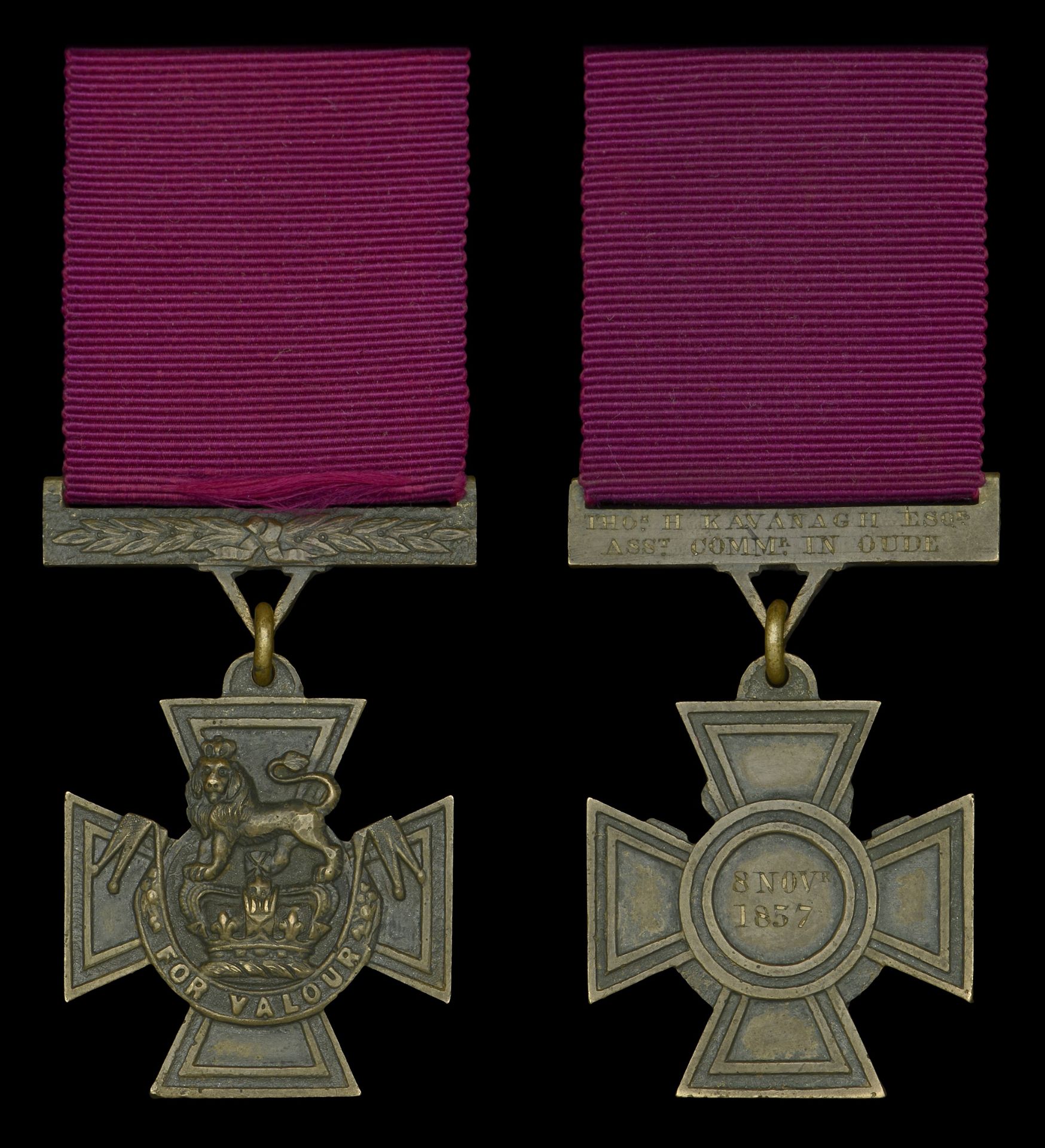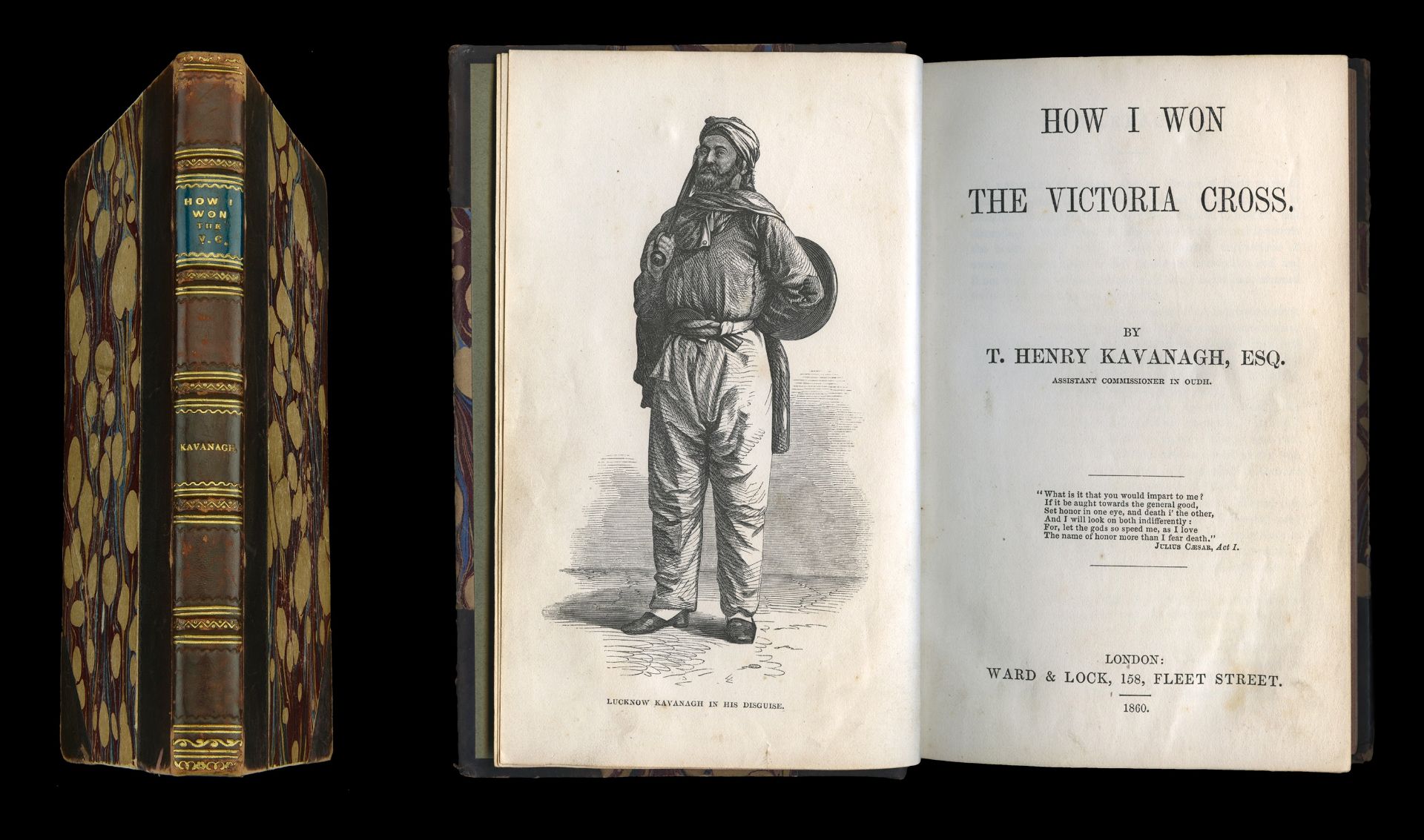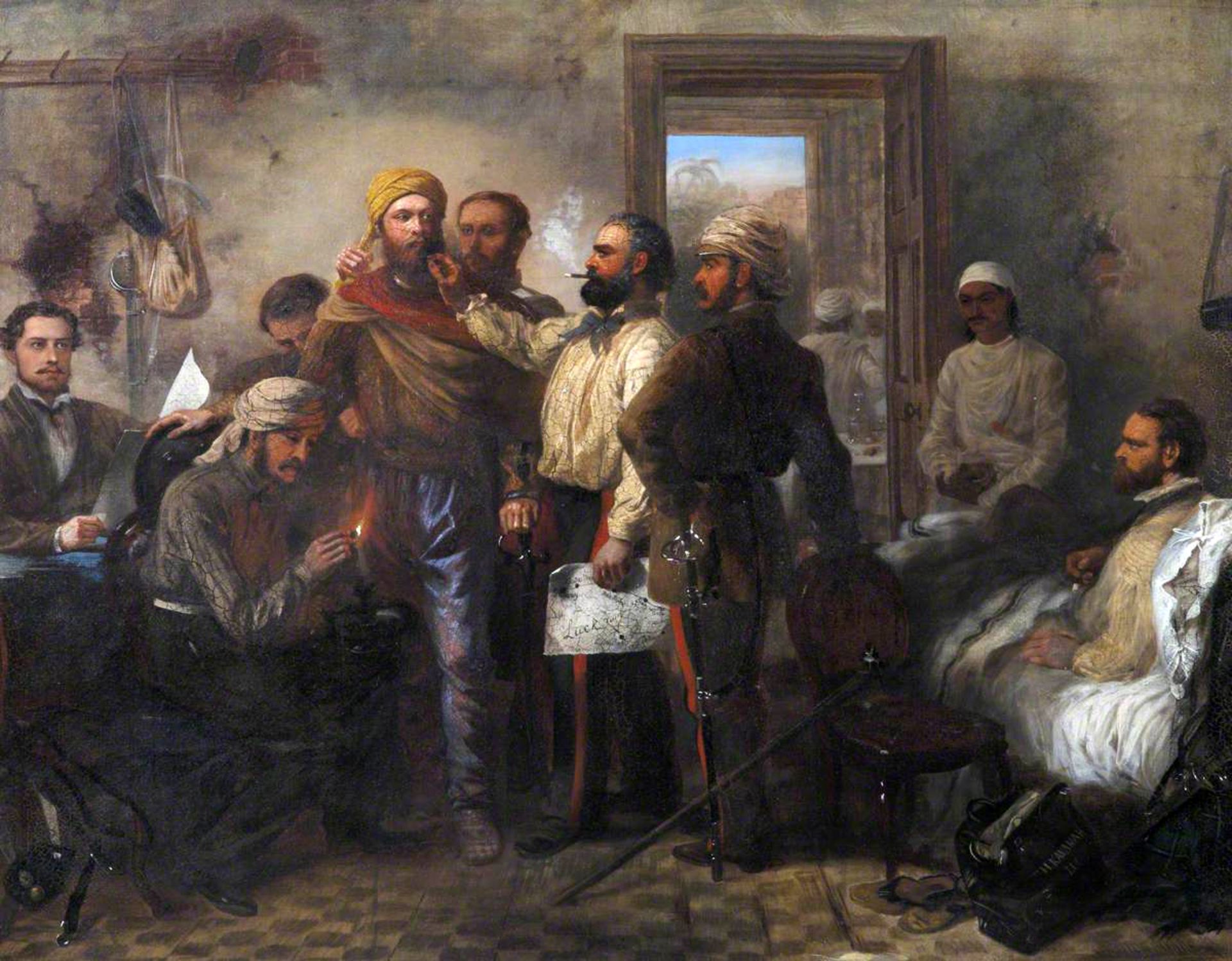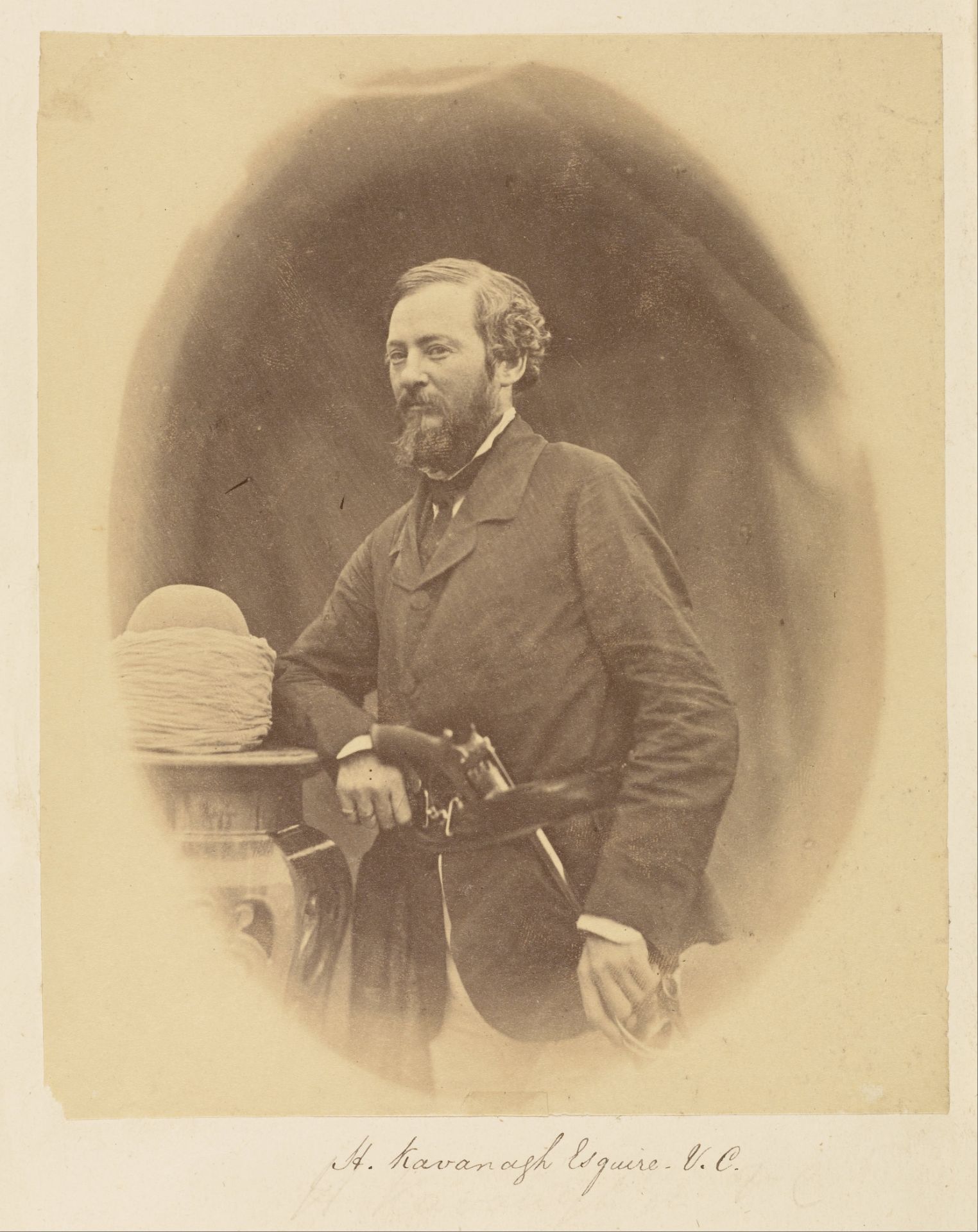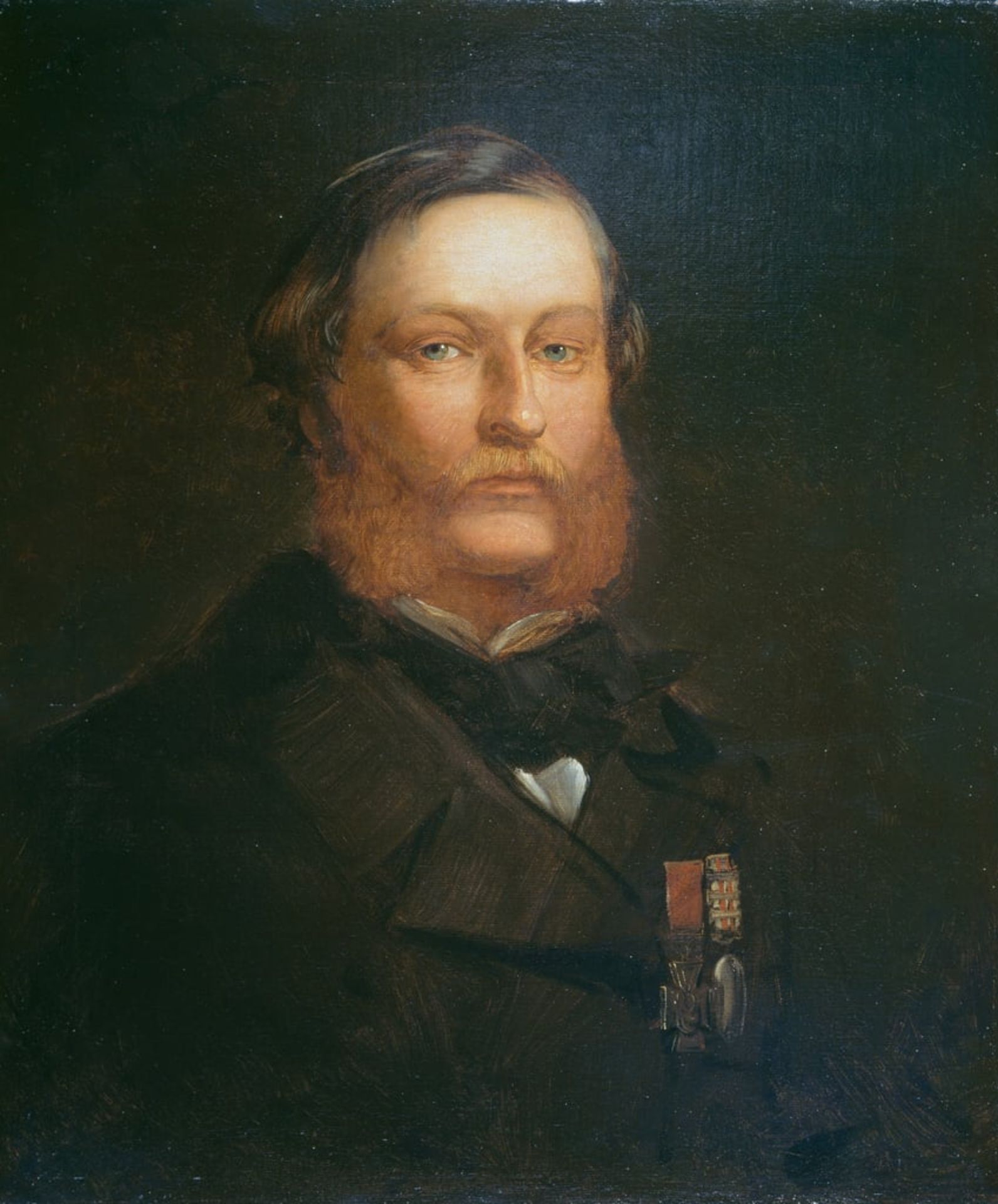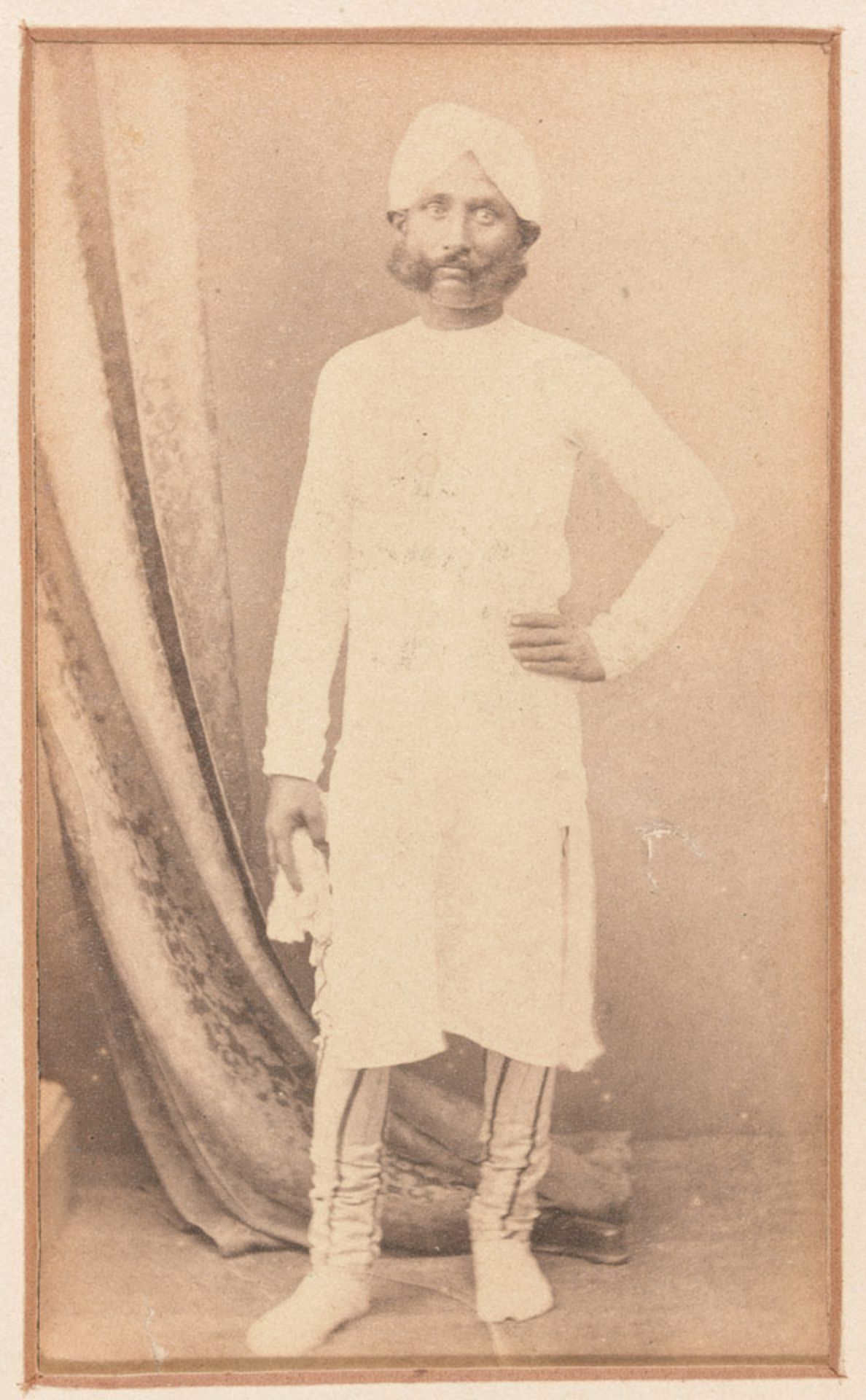‘This escape at a time when the entrenchment was closely invested by a large army and communication, even through the medium of natives, was almost impossible, is, in Sir Colin Campbell’s opinion, one of the most daring feats ever attempted, and the result was most beneficial’ (Commander-in-Chief’s Despatch to the Government of India) ‘I resolved to die in the struggle rather than survive it with no better fame than I took into it.’ (How I won the Victoria Cross by T. Henry Kavanagh V.C.) The famous Indian Mutiny ‘Siege of Lucknow’ V.C. awarded to Mr. Thomas Henry Kavanagh, Bengal Uncovenanted Civil Service Serving under the orders of Lieutenant-General Sir James Outram in Lucknow, Kavanagh was decorated with the highest honour for undertaking an epic quest to escape the surrounded Residency at night, cross enemy lines, make contact with the camp of the Commander-in Chief, and then using his local knowledge, guide the relieving force through the city to the beleaguered garrison by the safest route. Conceiving the plan himself, Mr Kavanagh, an Irishman employed as a clerk in the Lucknow Office prior to the Siege, volunteered to leave the safety of the Residency disguised as a Sepoy irregular soldier, accompanied by a Brahmin scout. The pair jostled past armed rebels through the narrow Lucknow streets, talked their way past sentries in the moonlight, forded deep rivers, tramped through swamps and narrowly avoided capture after startling a farmer who raised the alarm. On finally reaching a British cavalry outpost, Kavanagh delivered Outram’s vital despatch to Sir Colin Campbell and ably guided his column to the relief of the Residency garrison. The first of just five civilians to have been awarded the V.C., he was further rewarded with promotion to the gazetted post of Assistant Commissioner of Oude and was presented with his cross by Queen Victoria in a special ceremony at Windsor Castle. A tour of England and Ireland further enhanced his celebrity whilst the publication of his account of the Siege, ‘How I won the Victoria Cross’ and Louis William Desanges’ painting of him donning his Indian disguise - one of the truly iconic images of the Defence of Lucknow – ensured that he became a Victorian legend, indeed few histories of the conflict are without an image of ‘Lucknow Kavanagh’ Victoria Cross, reverse of suspension bar engraved ‘Thos. H. Kavanagh Esqr. Asst. Commr. in Oude’, reverse of cross engraved ‘8 Novr. 1857’, the Cross retaining much original patina, good very fine or better £300,000-£400,000 --- V.C. London Gazette 6 July 1859: ‘Thomas Henry Kavanagh, Assistant Commissioner in Oudh, Bengal Civil Service. Date of act of bravery: 8th* November, 1857. On the 8th* November 1857, Mr. Kavanagh, then serving under the orders of Lieut.-General Sir James Outram in Lucknow, volunteered on the dangerous duty of proceeding through the city to the camp of the Commander in Chief for the purpose of guiding the relieving force to the beleaguered garrison in the Residency - a task which he performed with the most chivalrous gallantry and devotion.’ *this was corrected to 9th November 1857 in the London Gazette, 8 July 1859. Thomas Henry Kavanagh was born on 15 July 1821 in Mullingar, Co. Westmeath and was educated in Ireland. His father was the Bandmaster of the 3rd Foot (Buffs), but little else is known about his early life. When still in his teens he entered the Indian Uncovenanted Civil Service in the Office of the Commissioner of Meerut and in 1849 was posted to Oudh with Sir Henry Lawrence, becoming a member of the Punjab Commission. Kavanagh went on to Lucknow with Lawrence and was a clerk there in one of the civil offices at the time of the Indian Mutiny. His wife and four eldest children (ultimately they had fourteen children) were fortunate to be also in the Residency at that time although his wife was wounded by a shell during the siege and his youngest child died in the Residency as a baby. Still, in his diary Kavanagh gave thanks for their deliverance from the atrocities further south: ‘My family were staying in Cawnpore, and it was arranged they should spend the summer there with some friends, as houses were difficult to get in Lucknow then; but providence willed that my wife should differ with some people under the same roof, and she at once came to me at Lucknow. Thank God she did.’ The Residency at Lucknow was besieged from 30 June 1857 and Generals Outram and Havelock, with over 2000 troops, had fought their way through the city on 26 September intending to rescue the garrison and return to Cawnpore but they too were surrounded and obliged to defend themselves in places adjoining the Residency Entrenchment. During the first months of the siege, like many non-combatant civil service men, Kavanagh was fully engaged in the resistance, leading a group of fellow civil service volunteers as a mobile reserve around the most embattled parts of the fortifications, manning field mortars and counter-tunnelling against bomb attempts by the rebels. However, the situation at Lucknow had become critical by November and realizing that the chances of the second relief force coming up from Cawnpore under Sir Colin Campbell would be greatly enhanced if they had a guide who knew the environs of the city well, Kavanagh saw his chance for glory and planned to volunteer to go out and bring them in. Having learnt that a spy had come in from Cawnpore and that he was returning in the night as far as Alumbagh with despatches to Sir Colin Campbell, he sought out the man and told him his desire to accompany him in disguise: ‘He hesitated a great deal at acting as my guide, but made no attempt to exaggerate the dangers of the road. He merely urged that there was more chance of detection by our going together and proposed that we should take different roads and meet outside of the city, to which I objected.’ (How I won the Victoria Cross by T. Henry Kavanagh refers). Kavanagh was not to be deterred. That afternoon he volunteered his services through his immediate chief, Colonel Napier. Both Sir James Outram and Napier, the Chief Engineer, were against the hazardous enterprise initially. As Kavanagh was a tall man, with fair hair and blue eyes, the matter of his appearance was of particular difficulty, but Kavanagh persisted and Outram finally consented to the plan. Kavanagh returned to his quarters: ‘I lay down on my bed with my back towards my wife, who was giving her children the poor dinner to which they were reduced, and endeavouring to silence their repeated requests for more. I dared not face her; for her keen eye and fond heart would have immediately detected that I was in deep thought and agitated. She called me to partake, of a coarse cake, but, as I could no more have eaten it than have eaten herself, I pleaded fatigue and sleepiness, and begged to be let alone. Of all the trials I ever endured this was the worst. At six o’clock I kissed the family and left, pretending that I was for duty at the mines, and that I might be detained till late in the morning.’ Kavanagh proceeded to a small room in the slaughter-yard where he disguised himself as a budmash or swashbuckler, with sword and shield, native made shoes, tight trousers, a yellow silk koortah (or jacket) over a tight-fitting white muslin shirt, ‘a yellow-coloured chintz sheet thrown round my shoulders, a cream-coloured turban, and a white waistband or kumurbund. My face down to the shoulders, and my hands to the wrists were coloured with lamp black, the cork used being dipped in oil to cause the colour to adhere a little.’ Thus attir...
















